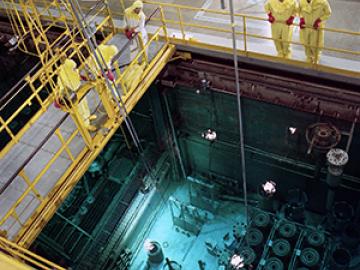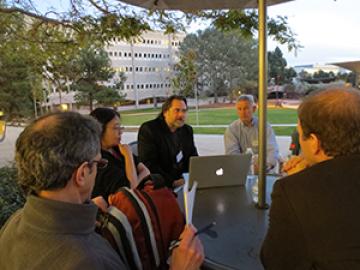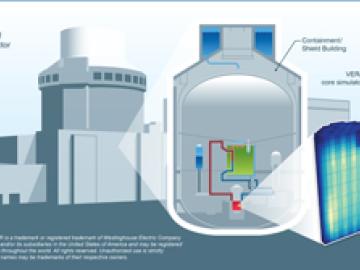Filter News
Area of Research
- (-) Neutron Science (3)
- (-) Nuclear Science and Technology (4)
- Advanced Manufacturing (1)
- Biological Systems (3)
- Biology and Soft Matter (1)
- Building Technologies (1)
- Chemistry and Physics at Interfaces (1)
- Clean Energy (5)
- Computational Biology (1)
- Energy Frontier Research Centers (2)
- Functional Materials for Energy (3)
- Geographic Information Science and Technology (1)
- Materials (19)
- Materials for Computing (1)
- Materials Synthesis from Atoms to Systems (3)
- Materials Under Extremes (1)
- Nuclear Systems Technology (1)
- Supercomputing (4)
News Topics
Media Contacts

For more than 50 years, scientists have debated what turns particular oxide insulators, in which electrons barely move, into metals, in which electrons flow freely.

The High Flux Isotope Reactor, or HFIR, now in its 48th year of providing neutrons for research and isotope production at the Department of Energy’s Oak Ridge National Laboratory, has been designated a Nuclear Historic Landmark by the American Nuclear Society (ANS).

The Department of Energy’s Oak Ridge National Laboratory concluded a series of workshops this month that engaged scientists from around the country to identify grand scientific challenges and how they might be addressed through application of neutron science.

Neutron scattering research at the Department of Energy’s Oak Ridge National Laboratory has revealed clear structural differences in the normal and pathological forms of a protein involved in Huntington’s disease.

A team representing Westinghouse Electric Company and the Consortium for Advanced Simulation of Light Water Reactors (CASL), a Department of Energy (DOE) Innovation Hub led by Oak Ridge National Laboratory (ORNL), has received an International Data Corporation HPC Innovation Excellence Award for applied simulation on Titan, the nation’s most powerful supercomputer, which is managed by the Oak Ridge Leadership Computing Facility at ORNL. s

Oak Ridge National Laboratory researcher John Wagner has been named a 2013 recipient of the Department of Energy’s Ernest Orlando Lawrence Award for his work in advancing computer, information and knowledge sciences.

Scientists and engineers developing more accurate approaches to analyzing nuclear power reactors have successfully tested a new suite of computer codes that closely model “neutronics” — the behavior of neutrons in a reactor core.




